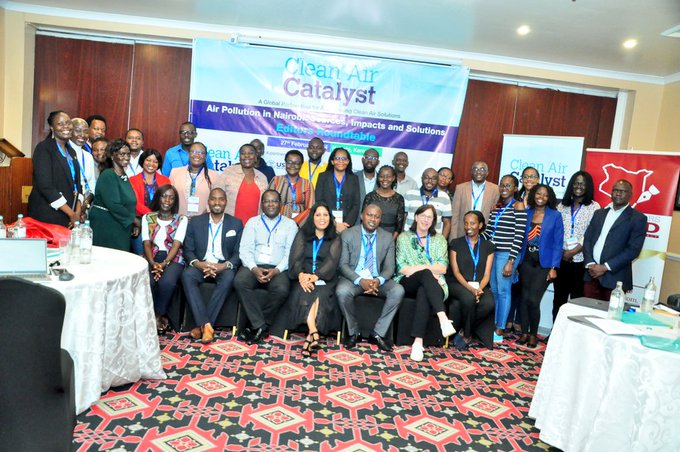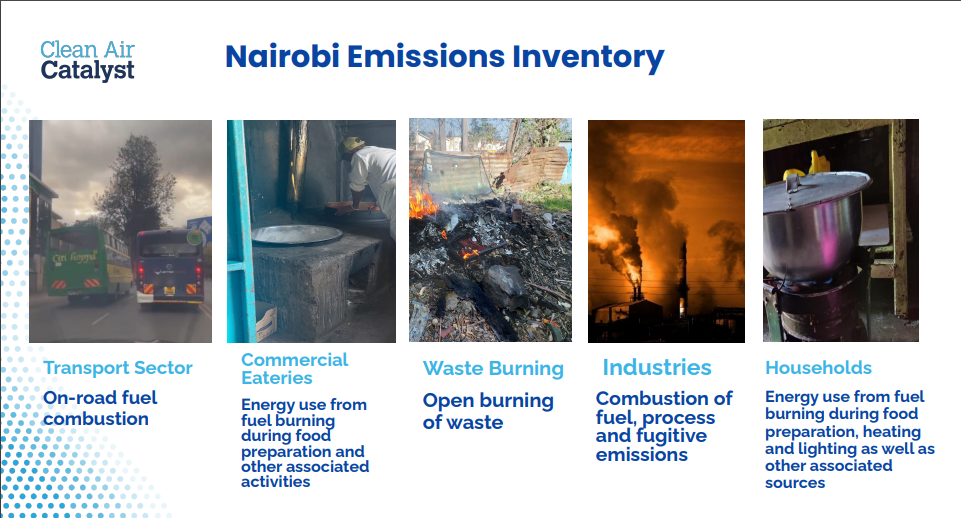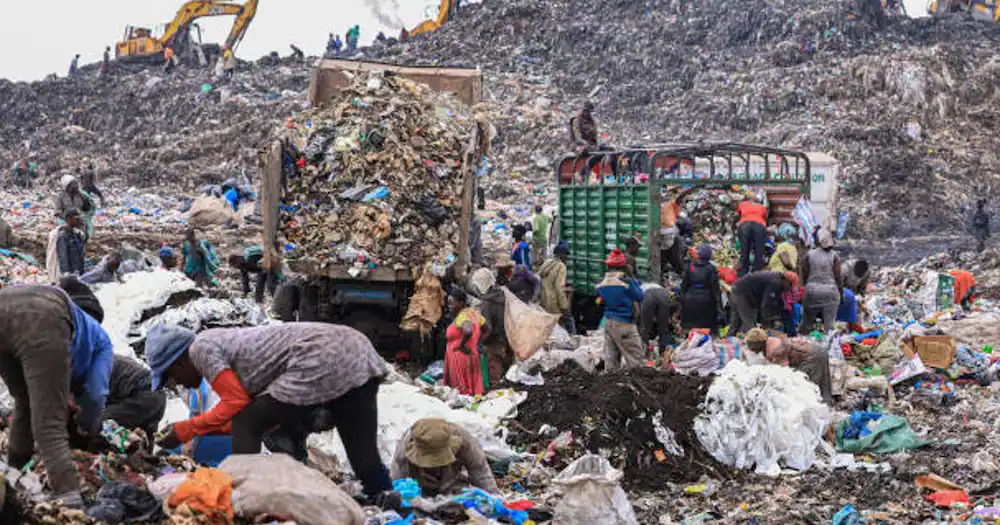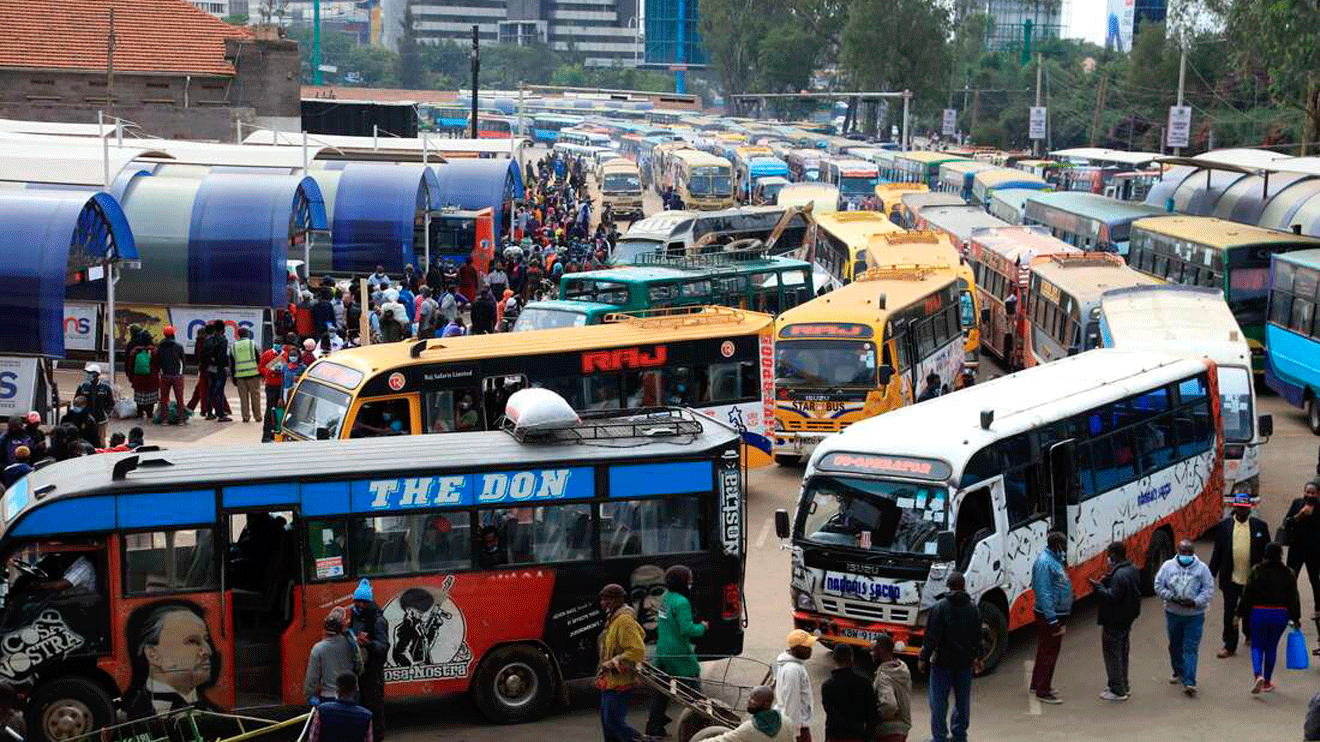By Kevin Sewe
Air pollution is one of the biggest threats to human health, economy, and overall Ecological balance. In the Kenyan capital of Nairobi, studies have shown that the air quality is consistently poor, with average annual PM2.5 levels more than double the World Health Organization’s (WHO) guidelines levels (WRI, 2021).
According to experts, the Ever-increasing populations and the intensification of industries, deforestation, construction works, and vehicular traffic have caused the air quality to worsen over the years (WRI, 2021). In particular, studies have reported on the increase in specific pollutants like organic compounds (VOCs) in Nairobi.

While addressing journalists during a media workshop organized by Internews Earth Journalism Network East Africa on ‘’Air Pollution in Nairobi: Sources, Impact and Solutions- How to Report Them’’ Mr Sammy Simiyu, the Vital Strategist and Co-chair of the Health Committed noted that Air Pollution has resulted to many deaths and has a great impact, especially to pregnant women.
‘’Generally, Air Pollutions affect adults and children as opposed to other diseases that might target specific groups of people such as Corona Virus that mainly affects the elderly. Studies have shown that 46% of deaths result from air pollution. Also, if a pregnant woman is exposed to air pollution, the unborn baby’s development will be affected and you are likely to see the impact after the baby is born.” Said Mr Sammy Simiyu

The transport sector in Nairobi County has been cited as the biggest Air Polluter in Kenya’s Capital City.
Maurice Kavai, Deputy Director, of Air Quality and Climate Change Nairobi City County Government, said that the transport sector accounts for 45 percent of Nairobi’s air pollution, followed by waste products, at 33 percent, and stationery energy at 22 percent.
Other factors contributing to Air pollution in the city are commercial eateries, industries, waste burning, and households.

To address the gaps, Internews Earth Journalism Network in collaboration with Clear Air Catalyst – A Global Partnership for Accelerating Equitable Clean Air and Climate Solutions- organized training and capacity building for local journalists to report on Air pollution in Nairobi and deepen public understanding of source, impact, and solutions of Air Pollution

“The media is critical in informing the public, shaping perceptions, and driving policies relating to air pollution. Journalists can stimulate community-level dialogues and help create enabling environments for policies. The mainstream media, community media as well as social media can reinforce key messages on air pollution and potentially bring about greater accountability and behavioral change’’
Clear Air Catalyst have also found to challenge most journalists encounter to access information. some of the challenges are; Members of the public in Nairobi would only grant them interviews off camera for fear of retaliation by cartels that run the garbage collection industry in Nairobi. Also, of reprisals from senior government officials prevented Nairobi residents from sharing important air quality information with journalists, Safety issues organizations with air quality information denied them access to the data, Media houses faced constraints in reporting on air quality, which included budgetary constraints, time and personnel dedicated to producing the stories.
Intimidation or fear while researching air pollution stores because some of the air pollution hot spots like Dandora are heavily protected by locals since they are a source of livelihood for the residents.

